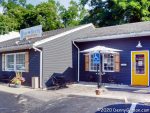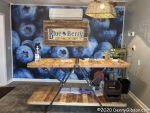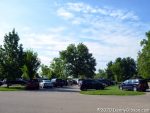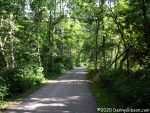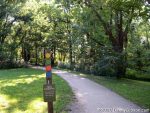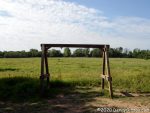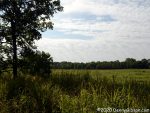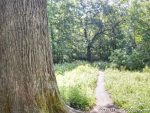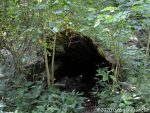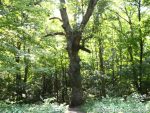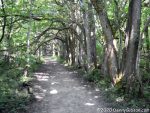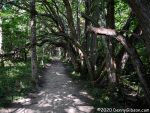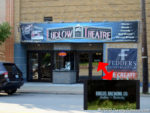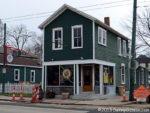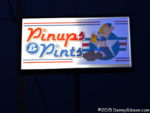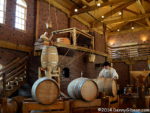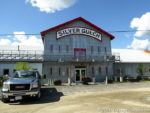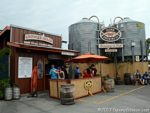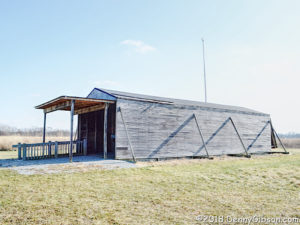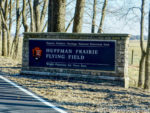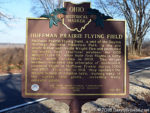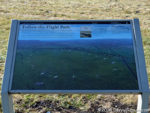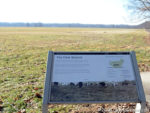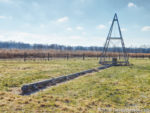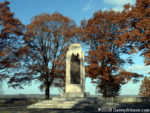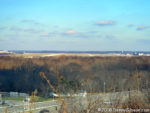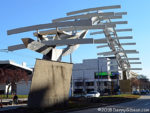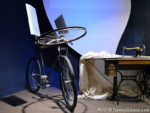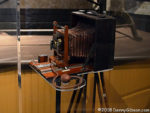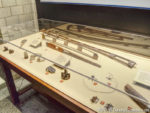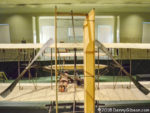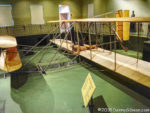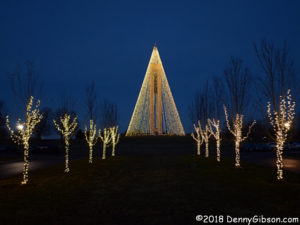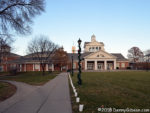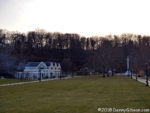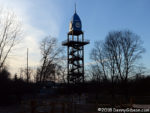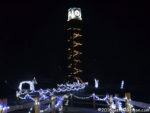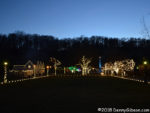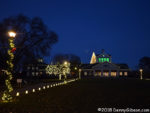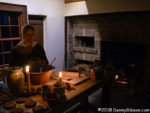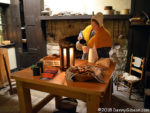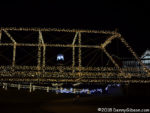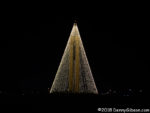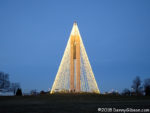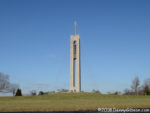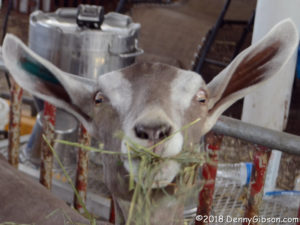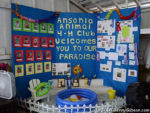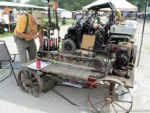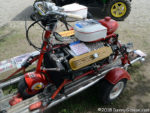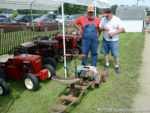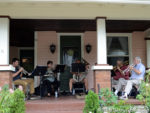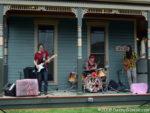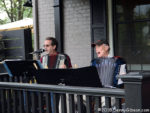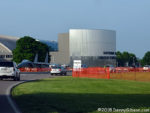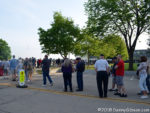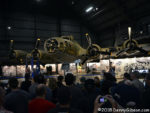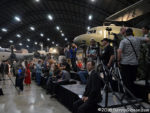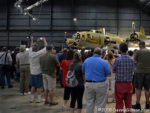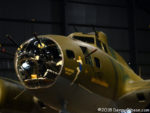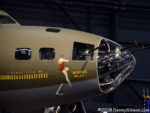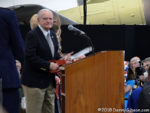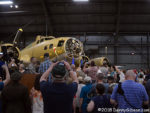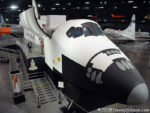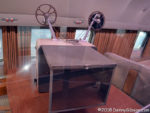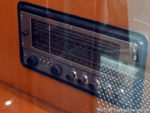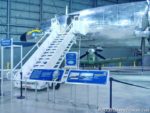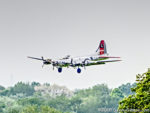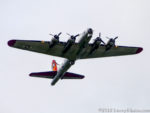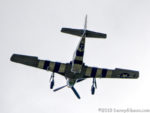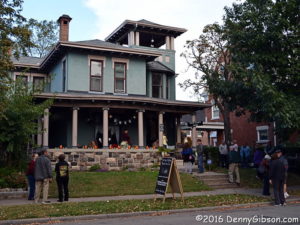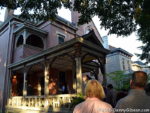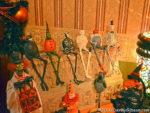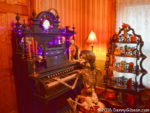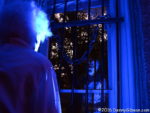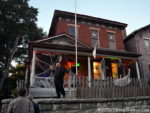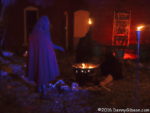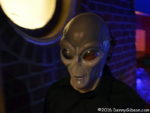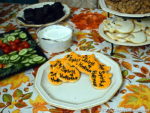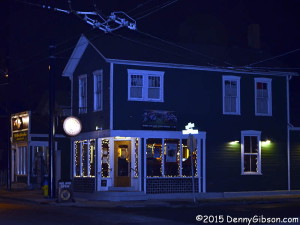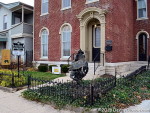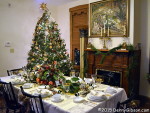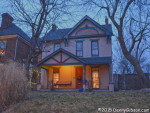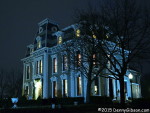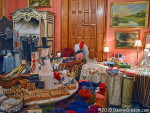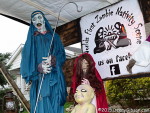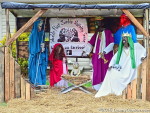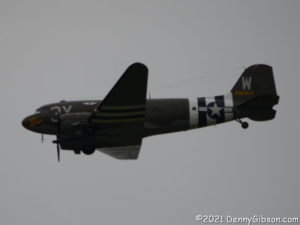 Lt. Col. John M. Donalson named his C‑47 “That’s All, Brother” as something of a declaration that the Nazi’s success in Europe was just about over. Then he used it to lead more than 800 aircraft loaded with paratroopers across the English Channel to confront those Nazis on the night of June 5, 1944. When I heard that the plane was coming to the National Museum of the United States Air Force on Tuesday, I thought I might be interested in seeing it. When I woke up a couple of hours ahead of its estimated arrival time, I decided that I was interested in seeing it land.
Lt. Col. John M. Donalson named his C‑47 “That’s All, Brother” as something of a declaration that the Nazi’s success in Europe was just about over. Then he used it to lead more than 800 aircraft loaded with paratroopers across the English Channel to confront those Nazis on the night of June 5, 1944. When I heard that the plane was coming to the National Museum of the United States Air Force on Tuesday, I thought I might be interested in seeing it. When I woke up a couple of hours ahead of its estimated arrival time, I decided that I was interested in seeing it land.
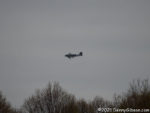
 A one-hour window had been announced for the landing and the plane appeared just about in the middle of that window. It made one pass over the runway without landing. Maybe that was so the pilot could scope things out or maybe it was so people on the ground could take pictures like the one at the top of this article. It then circled the museum and dropped onto the runway without a hiccup. Even with a chainlink fence in front of me, I was able to get a shot of the big airplane slipping safely between a water tower and a tractor-trailer.
A one-hour window had been announced for the landing and the plane appeared just about in the middle of that window. It made one pass over the runway without landing. Maybe that was so the pilot could scope things out or maybe it was so people on the ground could take pictures like the one at the top of this article. It then circled the museum and dropped onto the runway without a hiccup. Even with a chainlink fence in front of me, I was able to get a shot of the big airplane slipping safely between a water tower and a tractor-trailer.
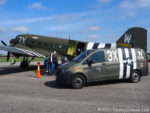

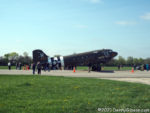 The museum’s announcement said that the plane would be available for up-close viewing, inside and out, once it was on the ground and parked. Inside viewing would be limited to two at a time. I figured there would be a long and — with the two viewer limit — slow-moving line to get inside the plane so I anticipated not doing that. I did walk out to the plane, however, to get a closer look and better photos. Next to the plane, T-shirts and other merchandise were being sold from a van. It’s a Mercedes. Maybe no one other than me saw the irony in that, and even I am unsure whether using a German vehicle with D-D stripes to support a U.S. WWII military plane is a major insult or simply cynical.
The museum’s announcement said that the plane would be available for up-close viewing, inside and out, once it was on the ground and parked. Inside viewing would be limited to two at a time. I figured there would be a long and — with the two viewer limit — slow-moving line to get inside the plane so I anticipated not doing that. I did walk out to the plane, however, to get a closer look and better photos. Next to the plane, T-shirts and other merchandise were being sold from a van. It’s a Mercedes. Maybe no one other than me saw the irony in that, and even I am unsure whether using a German vehicle with D-D stripes to support a U.S. WWII military plane is a major insult or simply cynical.
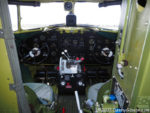
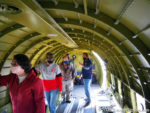
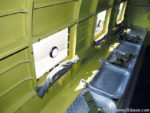 The line was not as long as I feared and the two-person limit was not in place although there was an effort to maintain social distancing and a mask requirement was being strictly enforced. The C-47 is a military version of the DC-3 so it isn’t completely unfamiliar. Of course, passengers seating in the DC-3s I’ve seen looked considerably more comfortable than this. Information on this plane’s history and future can be found at “That’s All, Brother”.
The line was not as long as I feared and the two-person limit was not in place although there was an effort to maintain social distancing and a mask requirement was being strictly enforced. The C-47 is a military version of the DC-3 so it isn’t completely unfamiliar. Of course, passengers seating in the DC-3s I’ve seen looked considerably more comfortable than this. Information on this plane’s history and future can be found at “That’s All, Brother”.
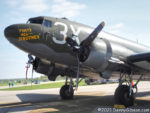
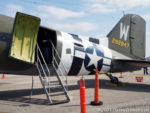 There was a lull in the boarding right after I exited the plane, and I was able to get a shot of the door. One of the operations “That’s All, Brother” was involved in after D-Day was dropping supplies in relief of the siege of Bastogne during the Battle of the Bulge. With a touch of awe in his voice, the docent inside the plane pointed out that those supplies were thrown out this very door.
There was a lull in the boarding right after I exited the plane, and I was able to get a shot of the door. One of the operations “That’s All, Brother” was involved in after D-Day was dropping supplies in relief of the siege of Bastogne during the Battle of the Bulge. With a touch of awe in his voice, the docent inside the plane pointed out that those supplies were thrown out this very door.
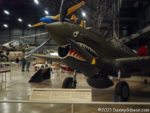
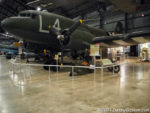
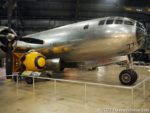 I could say that I took these pictures after checking out “That’s All, Brother”, but the truth is that there was a fair amount of time between the plane’s landing and it being available, and that’s when I went inside the museum. These pictures are, in fact, out of sequence. There are a few hundred aircraft displayed at the museum. Like “That’s All, Brother”, these are three with a WWII connection. The all-volunteer Flying Tigers, organized to fight in China before the U.S. entered the war used Curtiss P-40s. The C-47 in the middle picture was the last in routine USAF use. “Bockscar” is the name of the Boeing B-29 Superfortress that dropped an atomic bomb on Nagasaki on August 9, 1945. A mockup of that bomb, named “Fat Man”, is displayed beside it.
I could say that I took these pictures after checking out “That’s All, Brother”, but the truth is that there was a fair amount of time between the plane’s landing and it being available, and that’s when I went inside the museum. These pictures are, in fact, out of sequence. There are a few hundred aircraft displayed at the museum. Like “That’s All, Brother”, these are three with a WWII connection. The all-volunteer Flying Tigers, organized to fight in China before the U.S. entered the war used Curtiss P-40s. The C-47 in the middle picture was the last in routine USAF use. “Bockscar” is the name of the Boeing B-29 Superfortress that dropped an atomic bomb on Nagasaki on August 9, 1945. A mockup of that bomb, named “Fat Man”, is displayed beside it.
I’ve visited the museum several times and actually spent less time inside it today than on almost any other visit. But, for some unknown reason, I was really struck today by the amount of money, energy, and intelligence that has been devoted to creating machines whose sole purpose is the destruction of other machines — and people.
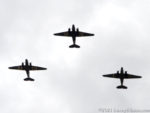 A friend called on Friday evening to tell me about a related event. “That’s All, Brother” was helping with a celebration honoring a local veteran. The celebration started Friday and would continue on Saturday. The fellow being honored was Jim “Pee Wee” Martin who parachuted into Normandy on D-Day and would be turning 100 on April 29. I decided I was interested in seeing that, too.
A friend called on Friday evening to tell me about a related event. “That’s All, Brother” was helping with a celebration honoring a local veteran. The celebration started Friday and would continue on Saturday. The fellow being honored was Jim “Pee Wee” Martin who parachuted into Normandy on D-Day and would be turning 100 on April 29. I decided I was interested in seeing that, too.
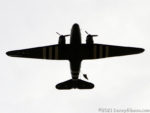

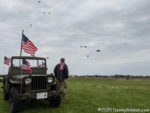 “That’s All, Brother” was joined by “Placid Lassie“, another C-47, and “D-Day Doll“, a C-53. All had participated in the D-Day invasion. As the three planes flew over Skydive Greene County, a couple dozen passengers exited. There were other jumpers, including the Army’s Golden Knights, and music, ceremonies, and fireworks were planned. Promised rain made an appearance about the time the Golden Knights finished their jump which prompted Terry, the friend who called Friday, and me to slip away while we were still mostly dry.
“That’s All, Brother” was joined by “Placid Lassie“, another C-47, and “D-Day Doll“, a C-53. All had participated in the D-Day invasion. As the three planes flew over Skydive Greene County, a couple dozen passengers exited. There were other jumpers, including the Army’s Golden Knights, and music, ceremonies, and fireworks were planned. Promised rain made an appearance about the time the Golden Knights finished their jump which prompted Terry, the friend who called Friday, and me to slip away while we were still mostly dry.

 These pictures are from Tuesday and are very out of sequence. When time permits, breakfast at the somewhat nearby (4 miles) Hasty Tasty is a nice prelude to an Air Force Museum visit. Hasty Tasty was a local chain that peaked at thirteen stores. This is the last and may also have been the first.
These pictures are from Tuesday and are very out of sequence. When time permits, breakfast at the somewhat nearby (4 miles) Hasty Tasty is a nice prelude to an Air Force Museum visit. Hasty Tasty was a local chain that peaked at thirteen stores. This is the last and may also have been the first.


